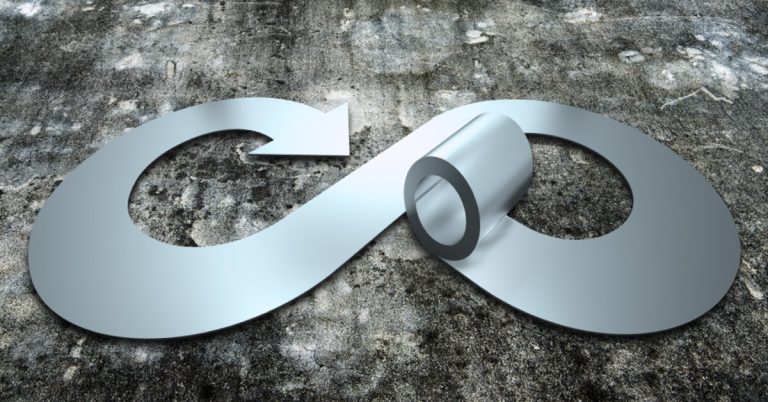Rivets: Machines, Types and How They Work

Rivets: Machines, Types and How They Work
Rivets are essential components in various industries, playing a crucial role in fixing metal parts.
By understanding the mechanics behind this component, as well as its variables, you will be prepared to make informed decisions to improve the projects carried out in your car garage.
Explore the “world of rivets” in this article, from installing them to the various types available and the intricate operations of this joining method.
What is a Rivet?
A rivet is a mechanical fastening device used to connect two or more pieces of material, such as metal, aluminium, plastic, or leather.
![]()
- Neutral Gear Saves Fuel: True or False?
How does a Rivet Work?
It consists of a pin or rod, which is inserted through the holes in the parts you would like to join, and a head on one end.
The pin is then deformed or tightened with an appropriate tool to fasten it permanently.
What is a Rivet for?
In the automotive industry, rivets are widely used to attach number plates, for example.
What Types of Rivets are There?
There are 3 types of rivets:
- Button rivets: have a cylindrical shank with a head. They can be applied with a hammer or rivet gun;
- Semi-tubular rivets: the end opposite the head on this type of rivet is hollow, the main purpose of which is to reduce the amount of force required to apply them;
- Blind rivets: commonly referred to as pop rivets, these have a tubular stem containing a chuck, which is applied using a manual riveting machine.
What are the Advantages and Disadvantages of Rivets?
Due to their function, rivets have several advantages and disadvantages, which may vary depending on their application and the specific context. Keep reading to find out what they are.
What are the Advantages of Rivets?
- Clamping stress: they are able to withstand high loads;
- Corrosion resistance;
- Ease of installation: they do not require electrical equipment or power sources to be applied, which can be useful in places where electricity is not available;
- Versatility: there are various models of rivets available to satisfy various application needs.
What are the Disadvantages of Rivets?
- Burrs: during the installation process, they may create burrs or bumps on the surface;
- Difficulty of disassembly: they can be difficult to remove without damaging the joined parts;
- They do not work well on all materials: they are best suited for fastening metal materials;
- Require specific tools: Rivet installation usually requires specific tools, such as a manual rivet machine.

How do you Apply a Rivet?
To apply a rivet:
- Prepare the parts: ensure that the parts you want to join are ligned up and that the holes are aligned and clean;
- Choose your rivet: select a rivet appropriate to the size and material of the parts. Remember that it should be long enough to go through all the parts required, with sufficient room for the rivet head;
- Insert the rivet: insert the rivet pin into the holes in the parts, ensuring that the head is on the opposite side of the parts;
- Apply pressure: aided by rivet pliers, tighten the pin firmly;
- Check the fastening: once installed, ensure that the parts are effectively joined together. If necessary, cut off any excess rivet pin with an appropriate tool, such as a cutting pliers.
How do you Remove a Rivet?
To remove a rivet, follow these steps:
- Identify the type of rivet;
- Use a drill;
- Drill a hole by placing the drill bit in the centre of the pin;
- Pry the pin out with pliers or a screwdriver to loosen the rivet pin and remove it from the hole;
- Disassemble the parts.
Remember to follow the applicable safety rules when using power tools or manual tools, and wear protective goggles.
Which features Should you Consider when Buying Rivets?
When buying a rivet, it is important to consider several characteristics to ensure that you choose the best one for the use you require, such as:
- Material: the material must be compatible with the materials would like to join. For example, a plastic rivet is perfect for joining parts made from the same material;
- Head type: choose the type of head required, depending on the aesthetics desired and specific application;
- Diameter: the diameter of the rivet is a critical factor in determining its load capacity. Generally, the larger the diameter, the greater the resistance;
- Length: it should be long enough to pass through the parts you want to join and allow the ends to deform during installation;
- Rod type: will depend on the accessibility of the installation area and whether access is available from both or only one side of the part.
- Corrosion resistance: if your application is subject to corrosive environments, choose rivets made of corrosion-resistant materials such as stainless steel or aluminium.
- Coating: some models may have coatings to improve corrosion resistance or appearance. Consider whether a coating is required for your desired application.
Which Rivets are Available in the KROFtools catalogue?
The KROFtools catalogue features tools can be used to apply rivets, enabling you to provide a good service in your workshop.
Keep treading to find out what they are.
Riveter and Rivets Set 101PCS

This set consists of a riveter, as well as rivets with diameters of 2.5 mm, 3mm, 4mm and 5mm.
Click on the image above to find out more about our Riveter and Rivets Set 101PCS (ref. 8529).
Nut / Rivet + Riveter Set

With an aluminium body and stainless-steel handle, this set contains rivets of different diameters, as well as screw rivets for different purposes.
Click on the image above to find out more about our Nut / Rivet + Riveter Set (ref. 3734).
Riveter Set With Plastic Rivets

This tool is used for riveting plastic panels in vehicle interiors, for example.
Click on the image above to find out more about our Riveter Set With Plastic Rivets (ref. 7541).
Plastic Rivets – 100PCS

It is possible to purchase packs of 100 pcs of plastic rivets with the following dimensions:
- 5 x 15.8 mm (Ref. 7546);
- 5 x 17.2 mm (Ref. 7548);
- 6 x 17.2 mm (Ref. 7547);
- 6.3 x 25.2 mm (Ref. 7545).
Click on the image above to find out more about our 100pcs Plastic Rivets.
How Much do Rivets Cost?
The average price of a rivet can range between €0.10 and €2. However, this may vary depending on the type, diameter of the rivet and the material it is made from.
Where tools are concerned, the price of a riveting machine can range from tens to hundreds of euros, as can rivet pliers.
![]()





